
The Right Honourable Mary Simon aims to be an Arctic fox
Canada’s first-ever Indigenous governor general doesn’t play favourites among our majestic natural wonders, but she...
Eddie Petryshen was backcountry camping with his brother in the Argonaut Creek drainage, north of Revelstoke, B.C., when they spotted “a twinkle of movement” on a ridge high above the old-growth rainforest.
The next morning, the brothers packed up their tent and followed a stream to the ridge, where they photographed fresh caribou tracks in the squishy mud.
For Petryshen, a conservation specialist for the non-profit group Wildsight, the rare sighting in August was a poignant reminder of the Argonaut valley’s importance to the endangered Columbia North caribou herd.
At 147 animals, the deep-snow herd is by far the largest southern mountain caribou population left in the Kootenays, in southeast B.C., and the one with the best chance of persisting in the long term.
Since 2006, five Kootenay herds have become extirpated, or locally extinct, including the South Selkirk and Purcells South herds, which winked out last year following years of decline.
The other three Kootenay caribou herds — the Central Selkirk, Frisby-Boulder and Columbia South populations — are struggling to survive, with only 26, 6 and 4 animals, respectively, according to 2020 data from the B.C. Ministry of Forests, Lands and Natural Resource Operations and Rural Development, which was released to The Narwhal upon request.
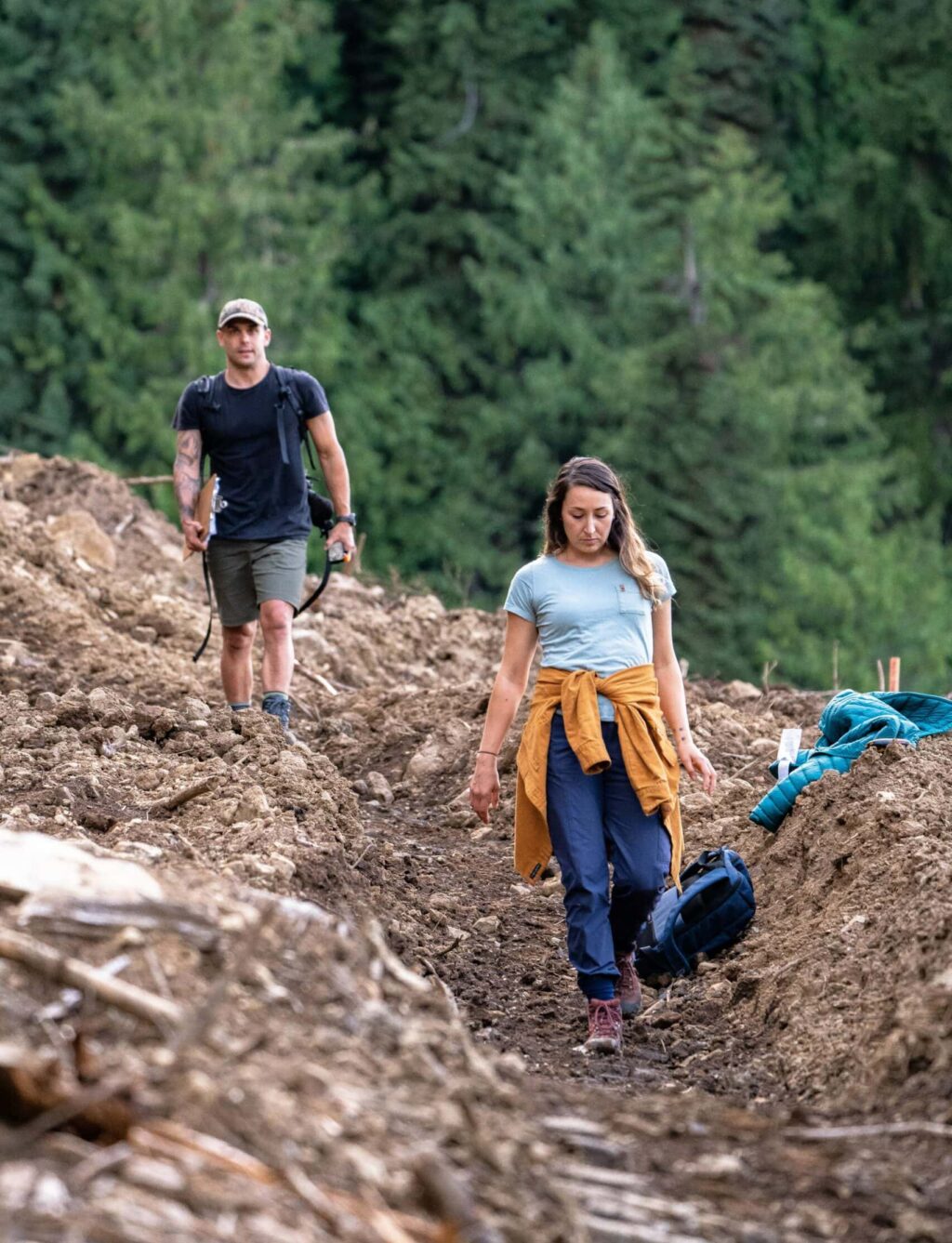
Charlotte Dawe with the Wilderness Committee and Thomas Knowles with Echo Conservation Society walk the new logging road in the Argonaut valley. Photo: Casey Dubois Media and Echo Conservation Society
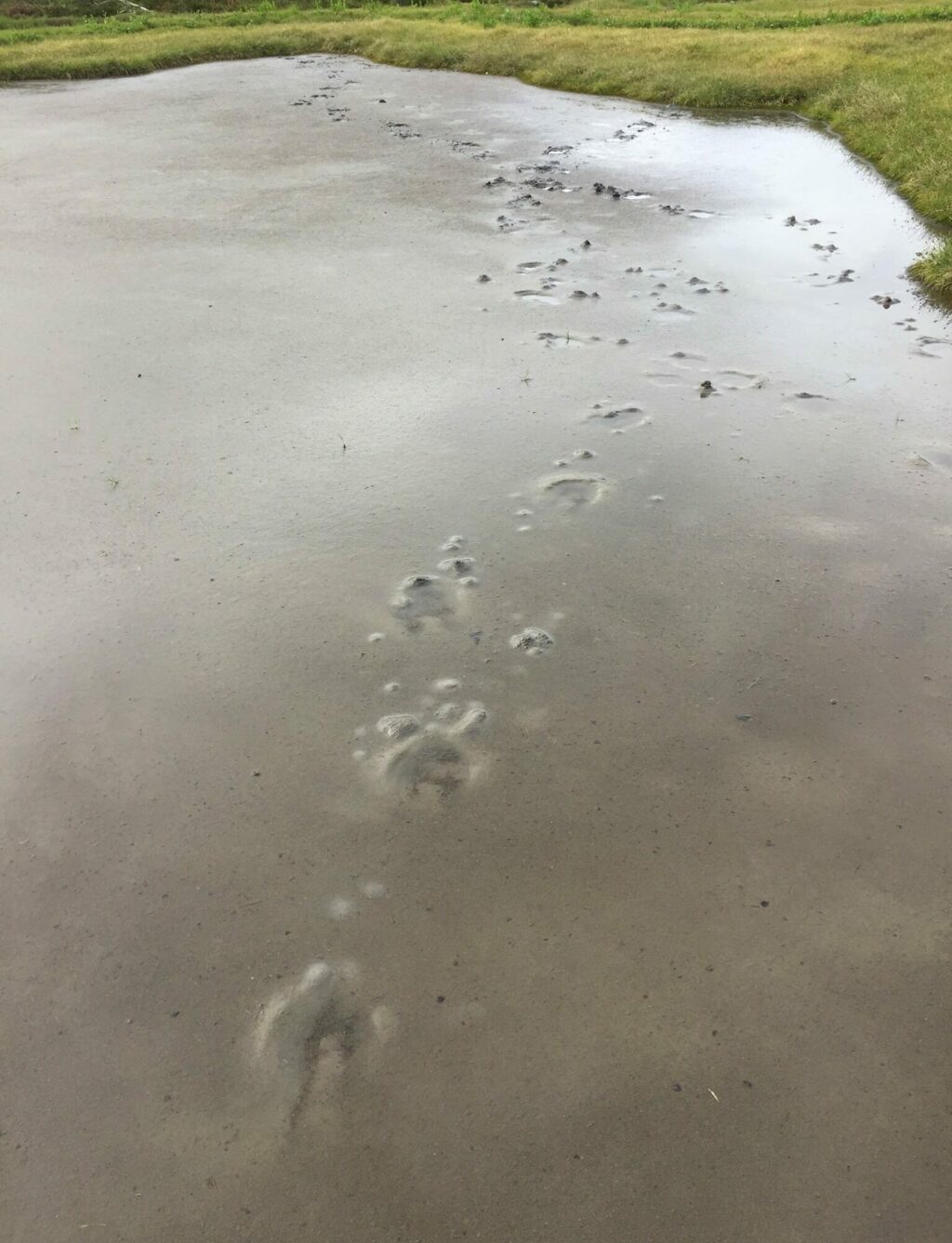
Eddie Petryshen, a conservation specialist with Wildsight, spotted these fresh caribou tracks when he was backcountry camping with his brother in the Argonaut Creek drainage in August. Photo: Eddie Petryshen
“The North Columbia is the place where we have to decide if we want to keep these caribou or not,” Petryshen said in an interview. “We’re running up against the clock because we’re still logging tons of old-growth in their habitat.”
Now the Columbia North herd faces a new threat.
BC Timber Sales, the government agency responsible for auctioning off logging permits, has planned 14 cutblocks in or near the Argonaut Creek drainage. Twelve of the cutblocks overlap federally designated core critical habitat for the herd. If the cutblocks are approved, they will result in the destruction of 300 hectares of what biologist Rob Serrouya calls “high-quality summer and early-winter habitat” for the herd.
Five of the 14 cutblocks are poised to be auctioned off in the near future, while long-term development will see most of the intact drainage roaded and logged.
In preparation for logging, the agency recently punched a five-kilometre road through the old-growth cedar and hemlock forest around Argonaut Creek, one of the last remaining unlogged valleys in the area.
In March, Serrouya, director of the caribou monitoring unit at the Alberta Biodiversity Monitoring Institute, and his colleagues conducted a preliminary analysis for the B.C. government and found that habitat alteration was accelerating for all caribou ecotypes in the province, despite recovery planning.
“This logging would contribute to that trend,” Serrouya told The Narwhal.
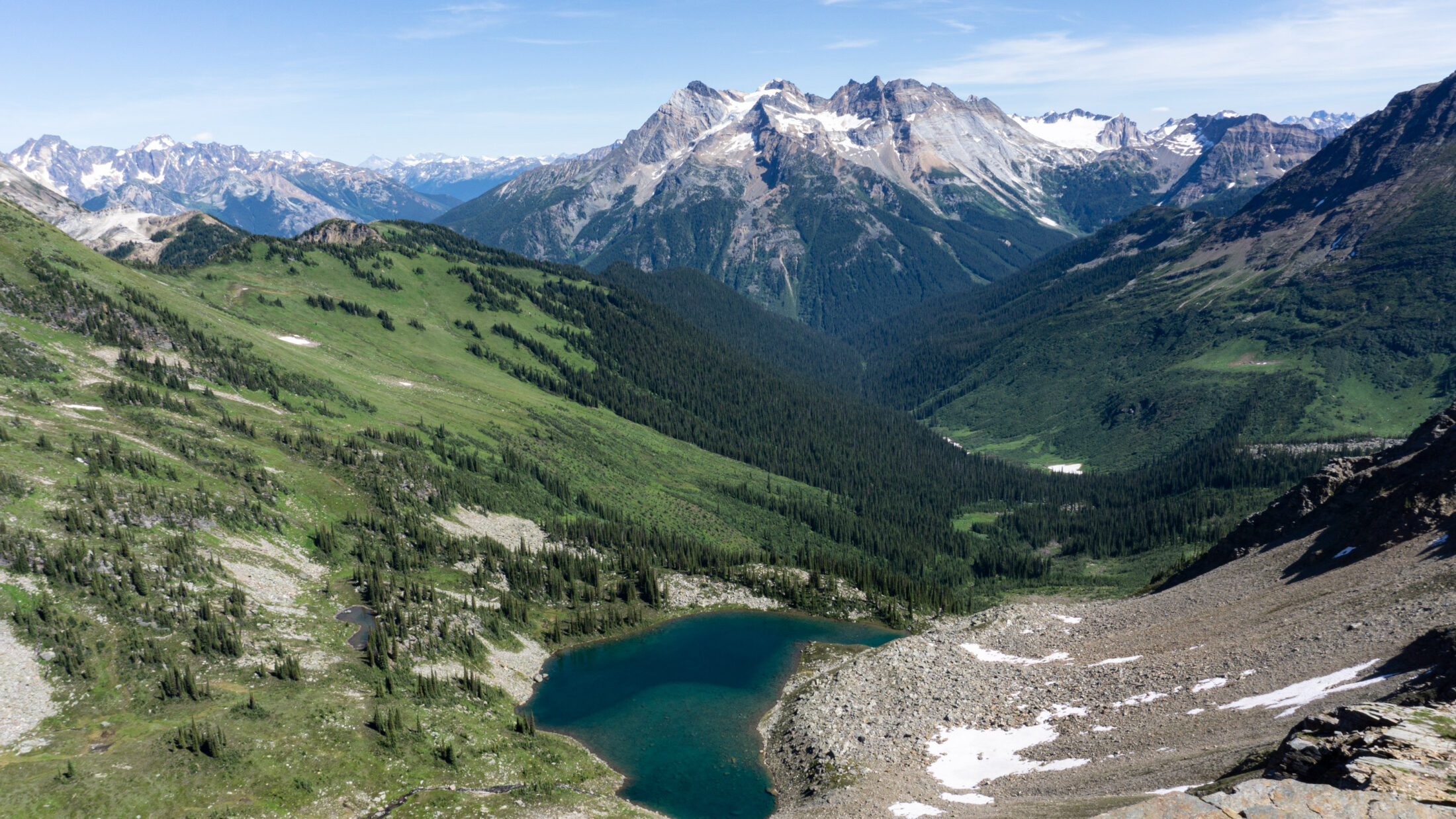
B.C. Timber sales plans to auction off most of the Argonaut Creek drainage, with 12 of 14 cutblocks in federally designated core critical habitat for the Columbia North herd. Photo: Wildsight
Like other mountain caribou, the Columbia North herd depends on nutritious lichen found on old-growth trees.
Petryshen, who bushwhacked through the Argonaut valley on his August trip, describes it as “rugged, incredible country” with inland temperate rainforest “like nowhere else” and individual trees 50 metres tall, the height of a 17-storey residential building.
“It’s a place that a lot of people don’t want to see logged,” Petryshen said. “It’s one of those drainages where you get a lot of critters because a lot of the [surrounding] landscape has been disturbed. … It’s a pretty wild place.”
On Oct. 6, Wildsight and seven other conservation groups sent a letter to Deputy Forests Minister John Allan and BC Timber Sales executive director Ray Luchkow, calling on them to cancel the “egregious plan” to auction off cutblocks in the Argonaut Creek drainage.
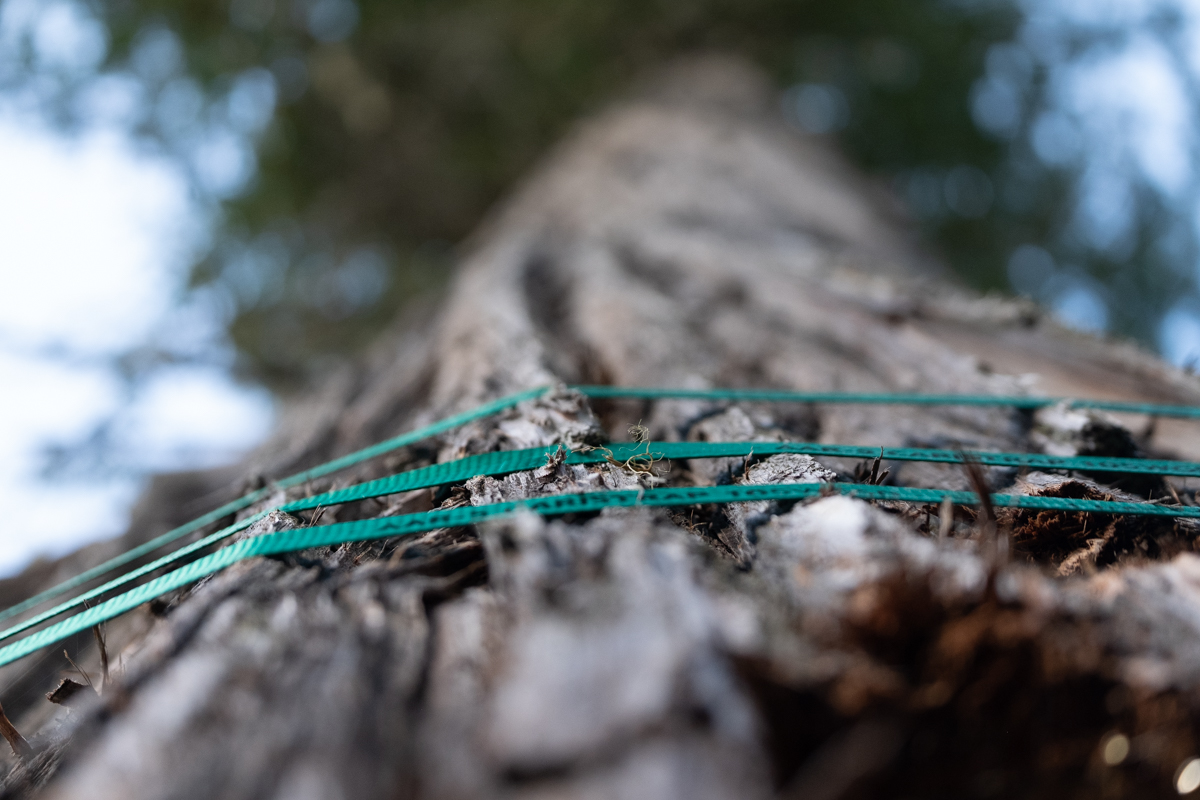
Some of the old-growth trees marked for logging in the Argonaut valley are 50 metres tall. Photo: Wilderness Committee
“We’re at a critical time right now,” Petryshen said. “It’s a good time for those blocks to be scrapped.”
The groups are asking the government to fully rehabilitate the new Argonaut valley road to secure habitat for caribou, grizzly bear and other species at risk of extinction. Logging plans call for the road to be extended by another 10 to 15 kilometres, according to the groups, which include the B.C. Wildlife Federation and the Wilderness Committee.
“A new road would increase the access for predators,” Serrouya pointed out.
Human disturbances, including road building, logging and oil and gas development, have destroyed or fragmented caribou habitat and given natural predators such as wolves easy access to herds with disastrous consequences for once-robust populations in B.C. and elsewhere in Canada.
The ministry said it could not comment on the Argonaut Creek auction by BC Timber Sales. “During the election period, all government of B.C. communications are limited to health and public safety information, as well as statutory requirements,” the ministry wrote in response to an email from The Narwhal.
Unlike six other provinces, B.C. does not have stand-alone legislation to protect caribou and other endangered species. The NDP government promised to enact such legislation during the 2017 election campaign — a pledge upheld in Premier John Horgan’s mandate letter for Environment Minister George Heyman.
But, once elected, the party reneged on its commitment.
Endangered species legislation is not mentioned in the 2020 NDP election platform, released on Oct. 6. Instead, the party vaguely says it will “work with neighbouring jurisdictions to cooperatively develop and invest in new strategies aimed at better protecting our shared wildlife and habitat corridors.”
The about-face on endangered species legislation comes as new information on the province’s 48 caribou herds highlights their perilous status and scientists around the world warn we are witnessing the sixth mass extinction event in the planet’s four-billion-year history. Scientists estimate as many as half of all species may be headed toward extinction in the next 30 years, largely due to habitat destruction.
“If you have a continuous trend of decreasing, that can only end in one way — and that is zero animals.”
Twenty-eight B.C. caribou herds are projected to decrease in size in the long term, according to a spreadsheet from the Forests Ministry, which lists each herd, the date the herd was last surveyed, the number of animals in the herd and the government’s projections for long-term trends.
“If you have a continuous trend of decreasing, that can only end in one way — and that is zero animals,” said Chris Johnson, an ecology professor at the University of Northern British Columbia who sits on committees advising the federal government on caribou recovery.
Johnson called the new data on B.C.’s caribou populations “very sad news.”
“[It’s] somewhat depressing for those of us who have worked for many years to try to maintain caribou in Canada,” Johnson told The Narwhal. “But not surprising.”
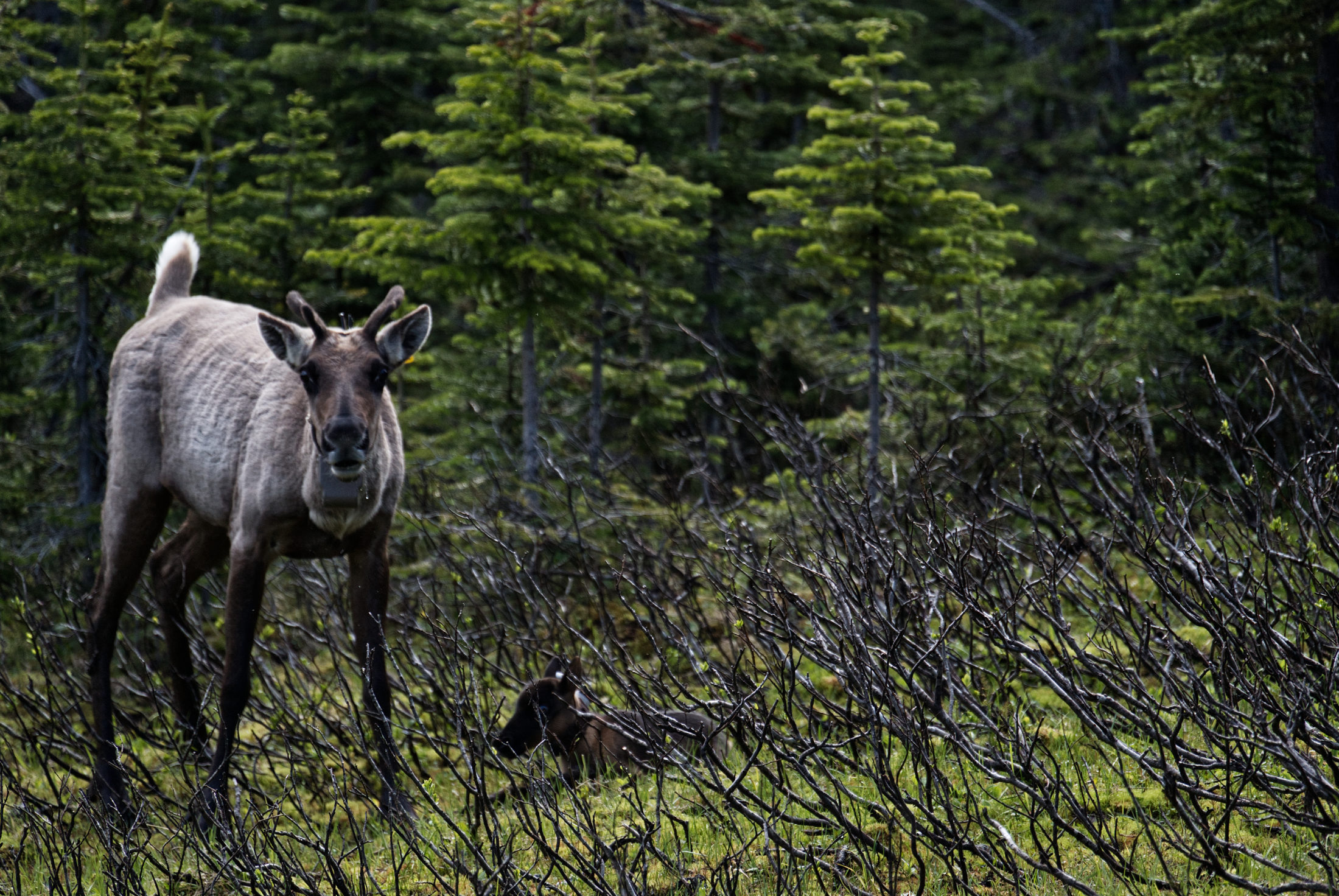
A caribou cow stands watch over its two-day old calf at a pen in B.C.’s Peace region run by the Saulteau First Nations and West Moberly First Nations. Photo: Ryan Dickie / The Narwhal
Four B.C. caribou herds have fewer than 25 animals, according to the ministry, signalling they are headed toward almost certain local extinction in the absence of immediate and intensive recovery measures. Eight herds have fewer than 50 animals.
Only three B.C. caribou herds, including the Columbia North herd, have stable populations, according to the ministry.
The ministry projects that just two B.C. herds — the Atlin and Carcross herds in the province’s far north — will increase in number in the long term. (A 2019 population estimate for the Carcross herd, last surveyed in 2008, is not yet complete.)
Joining five Kootenay herds on the lengthening list of local extinctions are the Burnt Pine herd in B.C.’s Peace region and the George Mountain herd, whose former hilly habitat Johnson can almost glimpse from his office window in Prince George.
“It’s a classic example, where you see the declines, you see small numbers of animals. You go back, and they’re not there. And they don’t come back,” Johnson said.
“Small populations typically get smaller faster. So we need to be really concerned about those populations that are less than 25. Those are the ones we could see disappear in a few short years.”
News about the Argonaut valley auction follows the release of an old-growth strategic review report commissioned by the B.C. government.
The report, written by B.C. foresters Al Gorley and Garry Merkel, calls for a paradigm shift in the way B.C. manages old-growth forests and lays out a blueprint for change.
The report says old forests have intrinsic value for all living things and should be managed for ecosystem health, not for timber. It also says many old forests are not renewable, which counters the prevailing notion that trees, no matter how old, will always grow back.
In response, the government announced it will temporarily defer logging in nine areas in the province, but it’s business as usual everywhere else.
One of the largest temporary deferrals from development consists of 40,000 hectares in the Incomappleux Valley east of Revelstoke, an inland rainforest with trees up to 1,500 years old. But Valhalla Wilderness Society director Craig Pettitt said the deferral areas “appear to cover a lot of inoperable forest, or forest that’s already been clear cut.”
The society said the government should allocate 32,000 hectares of the Incomappleux deferral unit “to actual endangered forest elsewhere, instead of protecting inoperable or clear-cut areas outside of the ancient forest.”
In its 2020 election platform, the NDP falsely asserts that the nine areas with deferred logging for two years are “protected.” The party promises to implement recommendations of the old-growth strategic review “to further protect old-growth stands.”
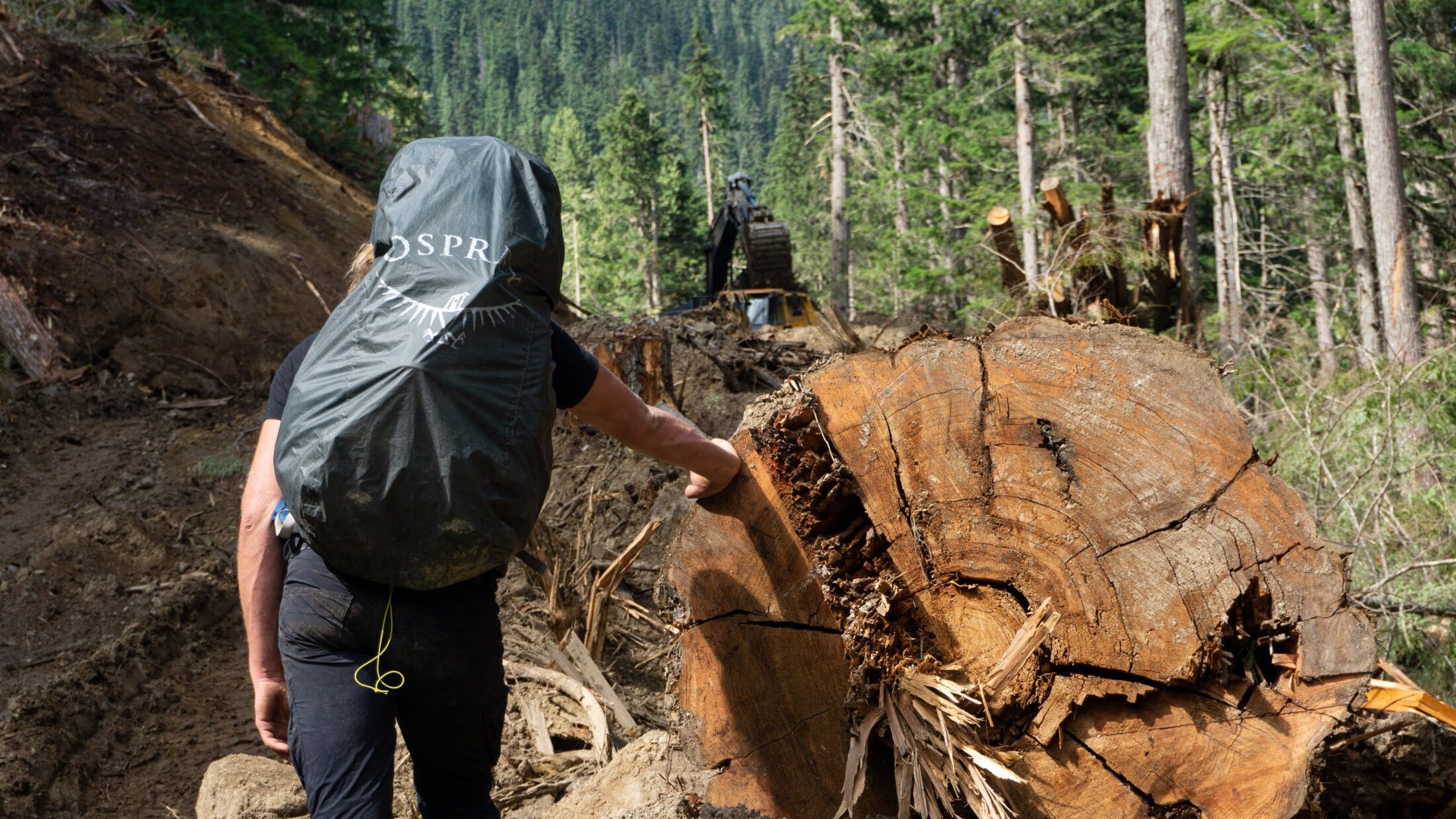
Old-growth cedar and hemlock around Argonaut Creek were cut to make way for a logging road. Photo: Wildsight
The auction of old-growth in the Argonaut Creek drainage, also part of the inland temperate rainforest, is by no means the first time the B.C. government has sanctioned logging in primary forests that provide critical habitat for highly endangered mountain caribou herds.
From October 2018 to July 2019, the government approved 78 logging cutblocks in the critical habitat of the Hart Ranges herd in B.C.’s interior, allowing industrial logging in an area almost three times the size of the city of Victoria.
And the government approved the removal or disturbance of 2,750 hectares of Hart Ranges caribou habitat for the Coastal GasLink pipeline, which will supply fracked gas from northeast B.C. for the LNG Canada project. The pipeline eliminates old-growth forest the B.C. government had set aside for the Hart Ranges herd’s recovery and cuts through two designated caribou migration corridors, according to project documents.
The Hart Ranges herd, estimated to be 408 animals in 2020, is one of the province’s most robust caribou populations. But the Forests Ministry predicts the herd, which 10 years ago had 600 animals, will decrease in the long term.
In northeast B.C., the Kaska Dena First Nation aims to create an Indigenous Protected and Conserved Area that would protect caribou and other endangered species, while helping to preserve the Kaska way of life.
The proposed protection area — which received federal government funding last year but needs approval from the B.C. government to proceed — includes habitat for seven caribou herds. The Rabbit and Frog herds would have 86 and 84 per cent of their habitat protected, respectively. Four other herds — the Muskwa, Gataga, Horseranch and Liard Plateau — would have between 24 and 53 per cent of their habitat protected.
The B.C. government knows little about the status of caribou herds in the region. While it periodically does surveys, it says those numbers represent observed caribou and are not population estimates.

The proposed Kaska Indigenous Protected and Conserved Area is home to seven caribou herds. Photo: Taylor Roades / The Narwhal
Two herds whose habitat would be conserved in the Kaska protected area haven’t been surveyed since 1999, while the other populations were surveyed between 2004 and 2007. The exception is the Frog herd, which was observed during a sheep survey in 2020, when 114 caribou were spotted.
The long-term trend for most caribou populations in the proposed Kaska protected area is listed by the ministry as “unknown.” Only the Muskwa herd is listed as “stable.” It was last surveyed in 2004, when it had 738 animals, and herd numbers are projected to decrease in the long term.
Johnson said surveying caribou is often challenging because they are spread out over large areas, including in dense forests.
The last time the B.C. government surveyed the province’s five boreal caribou populations was in 2010. All five populations, which ranged between 79 and 360 animals at last count, are projected to decrease over the long term.
“We have to assume that they’re still decreasing and have to hope that the rate of decrease has not accelerated in the past 10 years,” Johnson said. “Some will be more stable than others, and it would be helpful to know which are having the most challenges so range planning processes can speed up.”
“When we look at the north this is a place where we can hopefully intervene and prevent the drastic declines and extirpations we’ve seen in the south,” Johnson said. “So again, monitoring is important for knowing when these things are starting to tip over the edge and potentially head towards extirpation.”
Update Friday, October 16, 2020 at 12:15 p.m. PST: This article was slightly updated to note that the Frog Herd was not surveyed itself in 2020, as previously stated, but was incidentally observed during a sheep survey that didn’t expand to the herd’s entire range. We owe this clarification to a provincial wildlife biologist who wrote in to tell The Narwhal that the next survey of the Frog Herd is planned for 2021.
Get the inside scoop on The Narwhal’s environment and climate reporting by signing up for our free newsletter. A $335 million funding commitment to fund...
Continue reading
Canada’s first-ever Indigenous governor general doesn’t play favourites among our majestic natural wonders, but she...

In Alberta, a massive open-pit coal mine near Jasper National Park is hoping to expand...

A trade war could help remake B.C.’s food system, but will family farmers be left...
